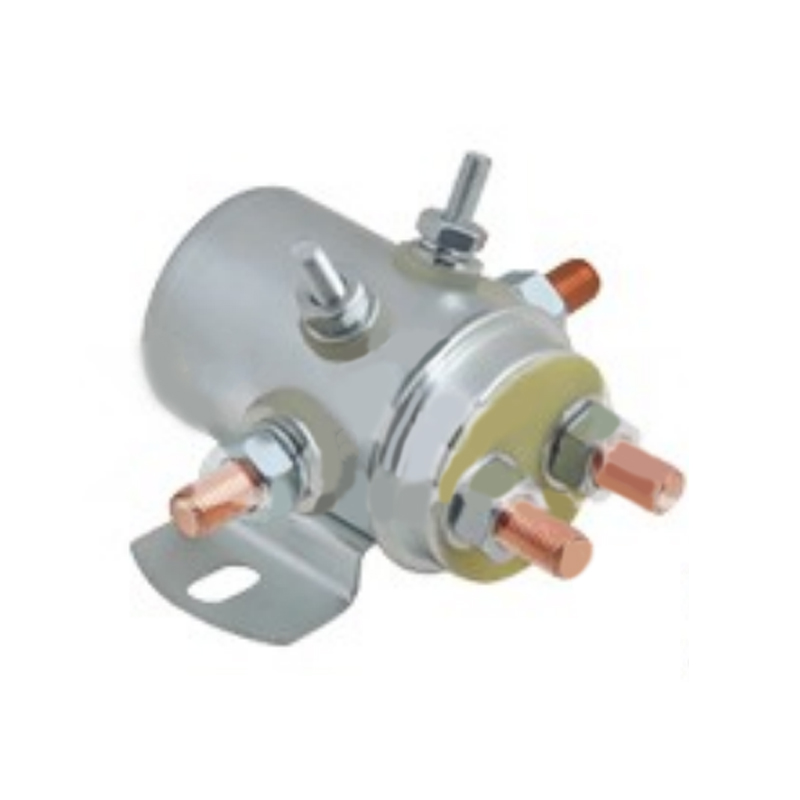- Tel: +86-15305875100
- E-mail: [email protected]
- Please contact us if you have questions.

Evaluating Long-Term Reliability of Winch Relay Systems Across Various Environmental Conditions
The winch system is a critical asset in off-road vehicles, marine operations, industrial recovery, and heavy-duty towing. At the heart of this system lies the Winch Relay, responsible for channeling electrical power from the battery to the winch motor. For users operating in challenging terrains or variable climates, understanding how a winch relay performs under different environmental conditions is essential for maintaining functionality and safety. This article explores the reliability of winch relays across a range of operational environments.

Temperature extremes and thermal tolerance
Winch systems are often used in environments that range from sub-zero temperatures to desert heat. A high-quality relay must withstand thermal stress while maintaining consistent performance. In cold environments, relays are at risk of delayed activation due to stiffened internal components or condensation-related shorts. In high heat, contact points and plastic casings can degrade if not rated for elevated temperatures. To combat this, industrial-grade relays typically include heat-resistant materials, sealed housings, and metallic mounting structures to disperse heat effectively. Some models are even rated for operation between -40°C and 85°C, providing confidence in both winter and summer conditions.
Moisture and water exposure
In marine environments, rainy climates, or humid jungle terrains, winch systems are constantly exposed to moisture. Water intrusion is one of the guiding causes of relay failure. Unsealed or poorly constructed relays may allow water to reach contact points, causing corrosion, short circuits, or arcing. To address this, manufacturers often offer relays with waterproof or weather-resistant enclosures rated to IP65 or higher. Rubber gaskets, epoxy potting, and corrosion-resistant terminal materials such as stainless steel are common in such models. Regular inspection and proper sealing during installation can greatly extend service life in wet conditions.
Dust, sand, and particle ingress
Winch relays used in deserts, mines, or dusty construction sites face a constant barrage of fine particles. Dust can infiltrate housing enclosures, interfere with mechanical switching, or cause abrasion over time. This is especially true for relays mounted near open wheels or close to the ground. To ensure reliability, look for relays with high IP ratings, sealed terminals, and ruggedized casings. In high-dust environments, a dustproof relay enclosure or protective shielding is often recommended during installation. Additionally, selecting relays with internal magnetic arc suppression helps maintain consistent switching behavior in abrasive surroundings.
Vibration and mechanical shock
Off-road and industrial vehicles are exposed to frequent vibration and occasional mechanical shocks, particularly when traveling on uneven ground. A reliable winch relay must maintain internal alignment and electrical contact integrity despite prolonged vibration. Models designed for such use often include anti-vibration mounting features and spring-loaded internal contacts to maintain stable connections. Solid-state or contactless relay technologies, though less common in traditional winch setups, offer good resistance to vibration-related issues due to their lack of moving parts.
Chemical and salt exposure
For relays used near roads treated with salt, in marine applications, or near chemical plants, exposure to corrosive agents is an added risk. Salt corrosion can quickly degrade metal terminals and internal contacts, causing resistance build-up and eventual failure. In these environments, it’s critical to use relays with corrosion-resistant materials, such as tin-plated or gold-plated contacts, and housings designed to block chemical ingress. Periodic cleaning and protective sprays can help extend relay lifespan in these conditions.
Conclusion
The overall reliability of a Winch Relay is heavily influenced by its ability to withstand environmental stressors such as temperature, water, dust, vibration, and corrosive agents. By choosing relays specifically rated for harsh conditions and applying proper installation and maintenance techniques, operators can ensure consistent performance and avoid costly downtime, regardless of the environment in which their winch systems operate.
News categories
Related Products
Request for a call today
-
-
Sophia Ye
-
Phone: +86-15305875100
-
WhatsApp: 15305875100
-
Email: [email protected]
-
- Mobile Terminal


 English
English Español
Español














